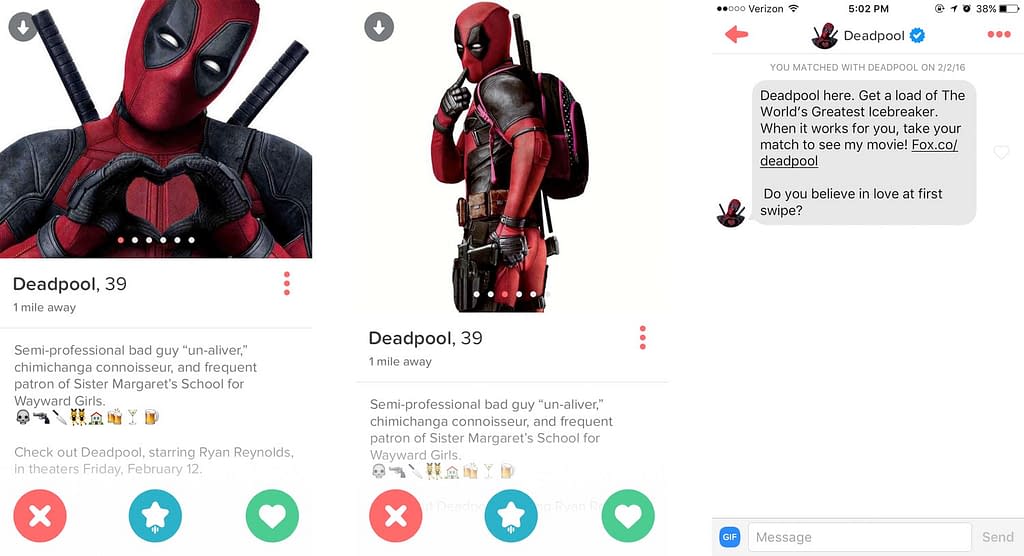Think of Guerrilla Marketing and you might picture a big, hairy, man-like animal beating its chest and bashing out a blog post.
Nope. That’s Gorilla Marketing.
What is Guerrilla Marketing?
A term first popularised in 1984 by a bloke called Jay Conrad Levinson, Guerrilla Marketing is an unconventional marketing strategy. It uses unorthodox techniques to market a product, brand, or message and is generally designed to shock, wow, and ambush a potential customer’s senses to develop publicity. As such an unconventional form of inbound marketing, good Guerrilla Marketing strategies get shared across social media; the best Guerrilla Marketing strategies make mainstream news.
You might recognise that word - Guerrilla. In the context of warfare, Guerrilla tactics are all about ambushing and surprising your enemy. Guerrilla Marketing is similar, except we’re not trying to kill our customers… but rather get them on side. We’ve put together the upsides and downsides of Guerrilla Marketing, along with a collection of the good, the bad, and the ugly sides of this technique.
Guerrilla Marketing can do a lot for a brand...
✅ It can be cheap with a very high return on investment. Guerrilla Marketing can be as simple as a stencil and a can of spray paint, or a cleverly-placed sticker. More than money, Guerrilla Marketing requires creative thinking and well-though placement. Sometimes, a big imagination is infinitely more important than a big budget.
✅ Word-of-mouth referrals develop high-quality leads. Guerrilla Marketing fosters excitement and buzz around a brand, which means leads are more likely to tell their peers about something cool they saw today. If you’ve hit your target audience, their peers are exactly the type of people you need to grow your pipeline. Word-of-mouth is always a powerful weapon to have in your arsenal.
✅ Publicity can snowball. A catchy Guerrilla Marketing campaign can make a business, putting it on the map. Particularly noteworthy Guerrilla Marketing campaigns get shared across social media, and are often picked up by local and even national news. Done right, Guerrilla Marketing is a marketer’s and PR professional’s dream, creating a year’s-worth of content and telling the brand story.
But that’s not to say it doesn’t have its downsides...
❌ Guerrilla Marketing can be easily misunderstood. The sheer randomness of a lot of Guerrilla Marketing campaigns and the air of mystery that surrounds them mean it can be a lot of effort for absolutely nothing. There’s a fine line between mysterious intrigue and mysterious confusion, so it’s important to make sure your brand is on the right side of it.
Example. In 2008, LED circuit boards were placed around Boston USA to promote a new animated television series. Unfortunately, the boards were mistaken for bombs and caused a city-wide incident as bomb-disposal experts had to be rushed to the scene. Subsequently Cartoon Network, who were behind the ads, had to stump up a $2 million fine. Ouch.
❌ Done outside of the law, Guerrilla Marketing can land a company in big trouble. They say any publicity is good publicity, but when you get a hefty fine dobbed on you… it might not feel that good. Ask for permission and go through the proper legal channels for a Guerrilla Marketing campaign, because you might land in hot water if you don’t.
Example. Dutch brewer, Bavaria, planted 36 women at a football World Cup game, all dressed in orange and making a huge racket to draw attention to themselves… illegally marketing at a sporting event without paying for it. Subsequently, two of the girls were arrested and required to pay a fine and an English football pundit even lost his job for selling tickets to the company for the stunt.
❌ There can be unpredictable obstacles, including people not liking it. Bad weather, bad timings, and bad attitudes can all throw a Guerrilla Marketing campaign off kilter. Bad weather and bad timing can prevent that wow moment for Guerrilla Marketing; bad attitudes can result in a loss of trust in a brand name, attaching negative connotations to it.
Example. In 2005, American soft drink manufacturer Snapple attempted to enter the Guinness Book of Records for the World’s biggest ice lolly… and failed. Shockingly, their ice lolly melted in the hot New York sun. As a result, a strawberry-kiwi tidal wave flooded New York Park, and Snapple were the laughing stock of a nation. Inept.
How to do Guerrilla Marketing.
As a broad subject coming in different shapes and sizes and standing upon different platforms, they say Guerrilla Marketing is best understood when it’s observed. So let’s observe.
Red Bull Stratos
Be wow.
In 2012, Red Bull sent Austrian skydiver Felix Baumgartner a full 128,100ft into the stratosphere in a world record attempt for the highest skydiving jump ever made. Red Bull Stratos has hundreds of millions of views across multiple different YouTube channels, and is remembered as one of the most outlandish stunts of all time. Despite having already been beaten, Red Bull Stratos will never be forgotten.
In truth, it was a very expensive, but effective, Guerrilla Marketing campaign. The whole world was talking about Red Bull and their connection to the world of sport. Felix Baumgartner will always be remembered as the nutter who jumped 40km to Earth; Red Bull will always be remembered as the company behind it all. Their name is the mission title and their logo is plastered all over the footage.
UNICEF Dirty Water Campaign
Be striking.
It’s fair to say that the NGO and charity sector has a lot to gain from Guerrilla Marketing. Their stories often contain a lot of shock value, and that translates well to marketing strategies to help raise funds and, most importantly, awareness.
UNICEF stuck a vending machine selling $1 bottles of dirty water in the middle of New York City. Their message was simple - instead of frivolously wasting your money on bottled water, why not put it towards bringing clean drinking water to less well-off areas? Each button on the machine was labelled with a different disease that is associated with drinking dirty water. Even before the days of YouTube, the campaign took off and major news organisations across the country all covered it.
The result? Nobody drank dirty water, but a lot of people donated.
MEX, @TryBlueSky
Be life changing.
Skydiving again. This time Ukrainian marketing and PR company MEX invited Ukrainian teenagers to give skydiving a try to get high, rather than taking drugs. The campaign was made to promote the Aerospace Centre, which is a public youth organization where teenagers can pursue careers as skydiving athletes or military and commercial pilots. The way they did it was ingenious.
MEX took advantage of the typical advertisement channels for Kyiv drug dealers. In short, this involves spray-painting a messenger channel contact on a wall, which people can then contact to discover a ‘drop point’ where narcotics are hidden around the city. For the @TryBlueSky campaign, instead of drugs hidden in the baggies… there was a free skydive.
It was a huge success and met massive critical acclaim. They gave out over 80 skydives and had more than 30 young people sign up for the Aerospace Centre School. The campaign itself won 18 awards. It’s creative, relatively cheap, and tackles a prevalent social issue. It’s a perfect example of Guerrilla Marketing.
Led By Donkeys, The White Cliffs of Dover
Be seen.
Led By Donkeys is a political activism organisation with a message to spread, rather than a product to sell. They rely heavily on Guerrilla Marketing tactics on account of being completely crowd-funded, and they got their start by pasting billboards of politicians' quotes and tweets which had turned out to be false years later.
In this instance, they projected a massive image on the White Cliffs of Dover, the first British landmark which refugees see as they attempt to cross the English channel. In the projection, a refugee spreads his message of love. Hassan Akkad is now an NHS worker, and he calls for empathy and an end for the need to make such a devastating and terrifying journey. He speaks of solidarity for his fellow refugees and calls out the sitting government for their failings of these people.
It’s a big statement on a huge scale.
Deadpool, Tinder profile
Be funny.

If you’ve not got the funds to go for a world record attempt, if you feel like you’ve already tackled all the social issues you can, and if all else fails… you can always try and be funny. Two Deadpool movies have relied on Guerrilla Marketing campaigns to get bums on cinema seats, and their most memorable campaign was to promote their Valentine’s Day release on dating app Tinder.
Cheap, simple, and might get a few laughs and a screenshot or two. A good example of Guerrilla Marketing at the opposite end of the spectrum to Red Bull Stratos.
Cheap or expensive; Heartbreaking or funny. Guerrilla Marketing comes in all shapes and sizes. One thing remains constant throughout… it always needs a good idea and a whole heap of creativity.
Table of Contents
Crack the sales formula with CRM Lab
Twice a month, receive actionable CRM content to your inbox.


